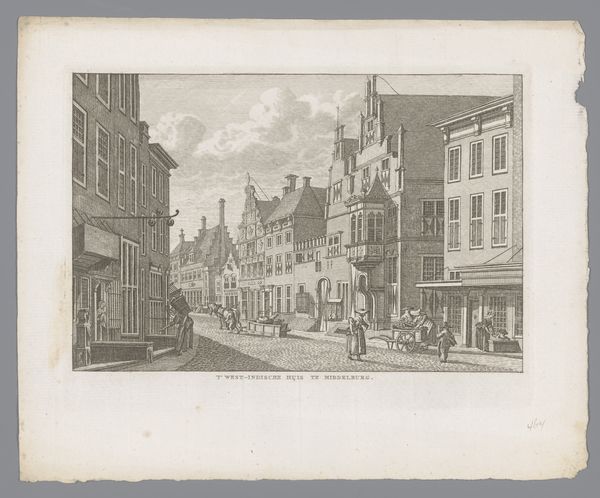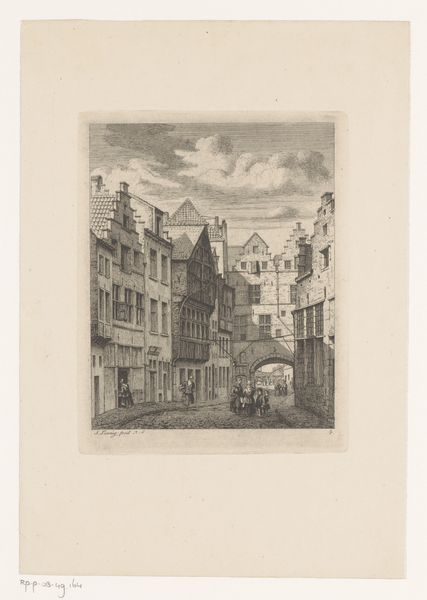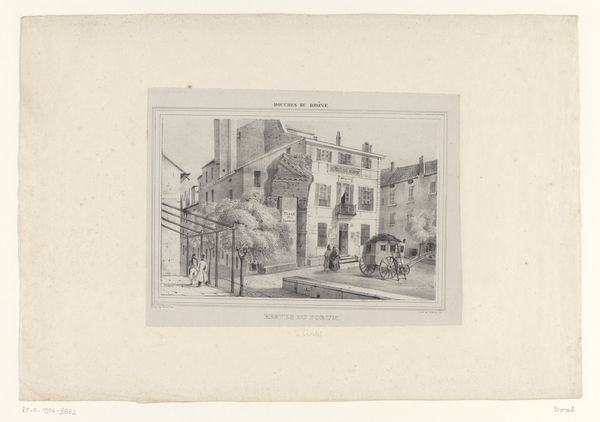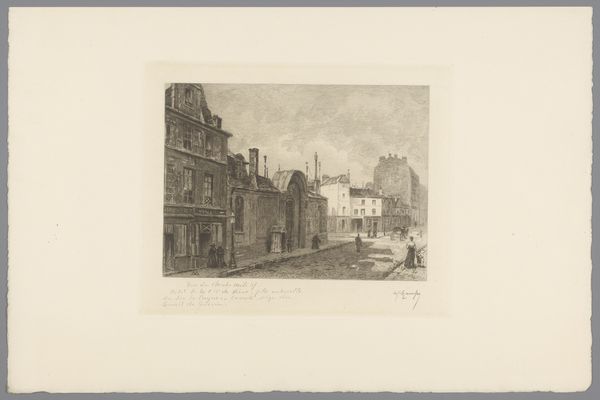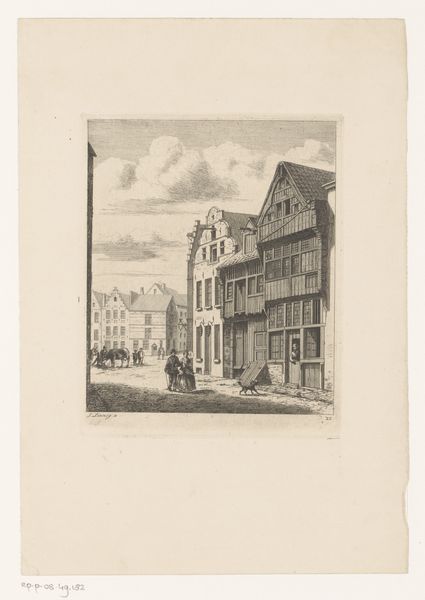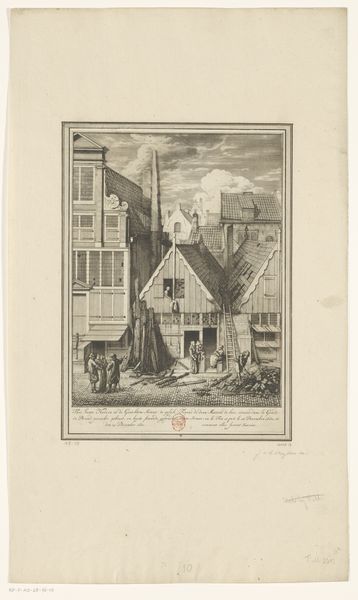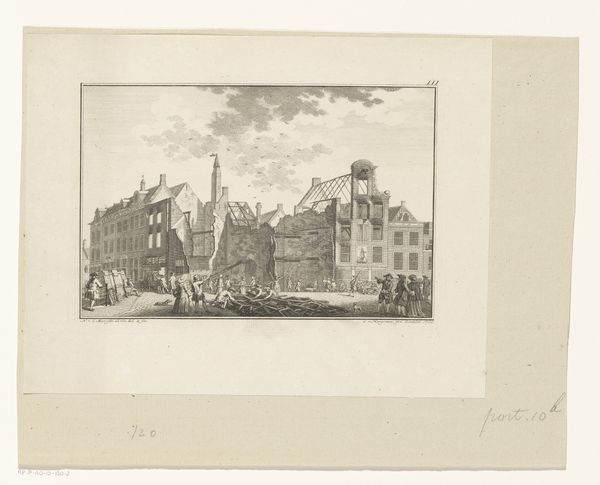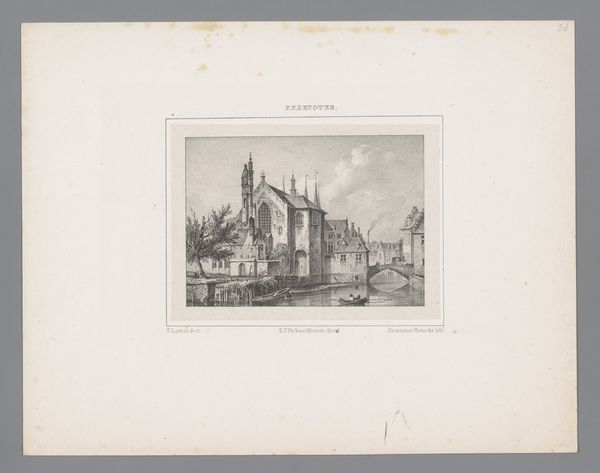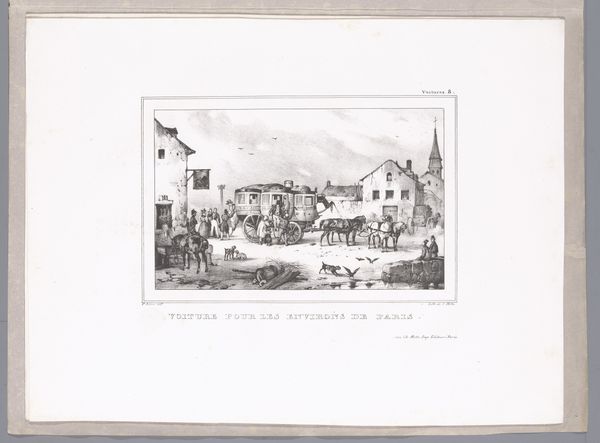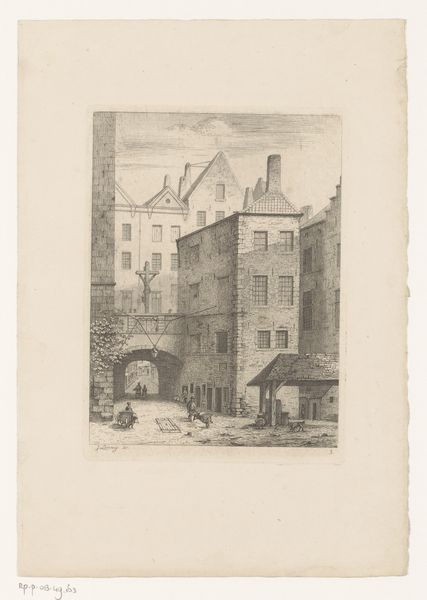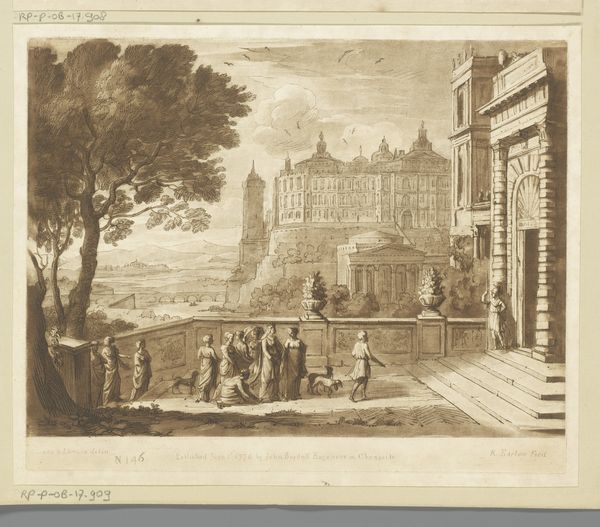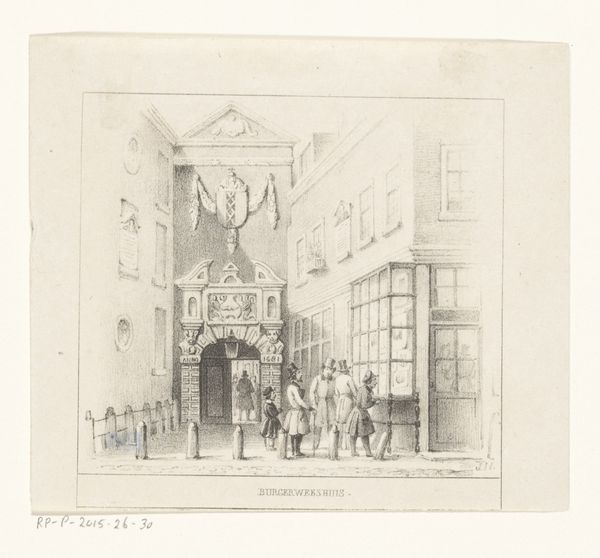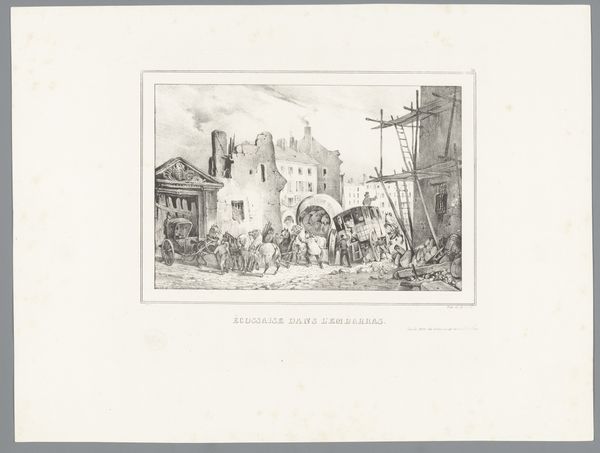
print, etching, engraving
#
dutch-golden-age
# print
#
etching
#
perspective
#
line
#
cityscape
#
genre-painting
#
engraving
Dimensions: height 165 mm, width 193 mm
Copyright: Rijks Museum: Open Domain
Curator: Welcome to the Rijksmuseum. We're standing before an etching entitled "Gezicht op de Rasphuispoort te Amsterdam," or "View of the Rasphuispoort in Amsterdam." Its maker is, alas, anonymous, and the work probably dates sometime between 1710 and 1766. Editor: There's such a stoic stillness to the whole scene. It’s black and white and almost surgically precise, which adds to the cold, almost authoritarian air it exudes. The tall buildings seem to loom, even in print. Curator: It depicts the entrance to the Rasphuis, a house of correction for men. These institutions emerged to address rising concerns around poverty, vagrancy, and petty crime in the Dutch Golden Age. Etchings such as this were made as visual documents of urban life, intended for mass consumption. They show the industrial nature of forced labor being central to urban organization. Editor: Ah, I see what you mean. So, the print itself participates in this system by turning human suffering into a commodity for public consumption. I'm particularly drawn to the figures in the foreground – are they just casual onlookers or complicit participants in this societal spectacle? Also, that tiny, bounding dog presents an intriguing juxtaposition, seemingly oblivious to the somber setting. Curator: Its depiction speaks to the role of visual representation in shaping social perceptions of justice and order, in this context. Etchings like these made this architectural statement and system of power accessible, reproducing it in the private sphere. I'm curious about the labor of production, about the engraving itself and who purchased this, what materials it was printed on, and so forth. Editor: Exactly, because in looking closely, it seems this seemingly straightforward cityscape is loaded with implied narratives about labor, power, and control during a transformative period in Dutch history. Curator: The etching is now one of the pieces informing our understanding of early institutions and power dynamics. Thank you for viewing this interesting piece. Editor: Indeed, it's a reminder that even seemingly benign cityscapes can reveal deeper, often uncomfortable, truths about society. Thanks for helping me see this old city with new eyes.
Comments
No comments
Be the first to comment and join the conversation on the ultimate creative platform.
